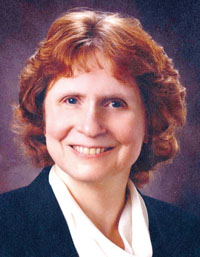Meet Michael. In June, he graduated from a high school where he was encouraged to use his own technology for teaching and learning, and to connect to the district’s Wi-Fi network, where he shared almost complete open internet access on school- and personal-learning devices while on campus. The district’s guidelines for appropriate conduct are delineated in the student code of conduct. The underlying principle that guides policy development in his district is one of trust.
During his high school career, Michael was encouraged to communicate and collaborate with his classmates and friends using the communication tools that best served their needs. Teachers and external instructional partners were frequently included in these communications. While some of their school-time communications were social, most were school-related. Michael was always mindful when posting to his profile accounts that there were “adults in the room.”
Through curricular projects, Michael learned how to use social media to increase his productivity and learning. Specific projects embedded instruction about mobile group collaboration, blogs, microblog hashtags, photo and video uploads, and aggregating posts into an online publication. In college, Michael will continue to grow his social bookmarking account to construct his own archive of learning resources. He sees it as a reflection of where his formal and personal learning meet.
He is fully aware of his digital persona, and while he hasn’t consciously molded it to “look good” to a college admissions officer or prospective employer, it does. His public school education has prepared him to be a productive learner in the 21st century.
Now, meet Jessica who is entering 11th grade in one of the 12 largest school districts in the United States. In this district, all personal devices are banned. The firewall blocks many sites that would be appropriate for secondary students because the district maintains the same settings for all K–12 learners. While the physical infrastructure of Jessica’s campus is impressive, its wireless capabilities are limited. If the district were to reverse its no-device policy or pilot a 1:1 (one computer per student) initiative, the existing network would collapse.
Jessica’s educational experience has not provided her authentic opportunities to communicate online with the real world. She will start the college admissions process at a disadvantage, as compared with students from schools like Michael’s. Jessica is acutely aware of this problem. Throughout her high school career, she has actively sought opportunities to communicate and collaborate with outside organizations, but most of these exchanges rely on free tools like Skype, Google+, Facebook, and Twitter, which are strictly prohibited on campus. Thus Jessica has not been able to participate.
Jessica’s K–12 educational experience will fail to show her how the tools that are ubiquitous in the real world—personal devices and interactive media—can improve productivity and make her a more independent learner. In her 12-year academic career, Jessica will be offered precious few lessons in digital citizenship and ethical use. Any 21st-century preparedness Jessica develops will occur in spite of, not because of, her K–12 education.
What can we learn from Michael’s and Jessica’s stories? Access to learning is an intellectual freedom issue, and many schools are denying students access to critical modern-day learning tools. It is imperative that K–12 educational programs integrate real-world technologies to embed digital citizenship throughout the curriculum. Those that fail to do so contribute to an ever-deepening digital divide.
ALA’s American Association of School Librarians (AASL) has designated October 3 as Banned Websites Awareness Day to highlight internet access as an intellectual freedom issue. AASL has compiled resources to help school librarians start conversations about policy revisions in their districts. For more information, please visit AASL’s Banned Websites Awareness Day site.
MICHELLE LUHTALA, school librarian at New Canaan (Conn.) High School, offers special thanks to DEB SVEC, school librarian at Palm Beach (Fla.) Gardens Community High School, for her contribution to this column.


